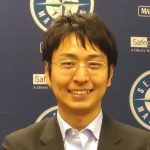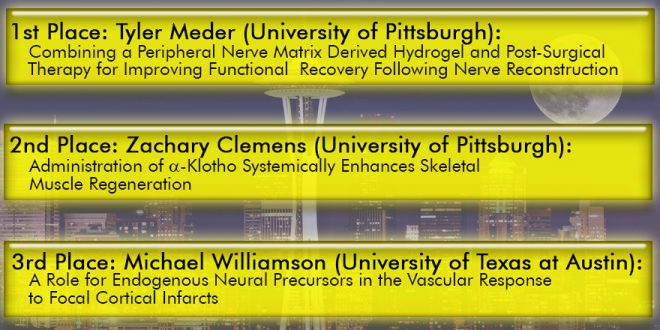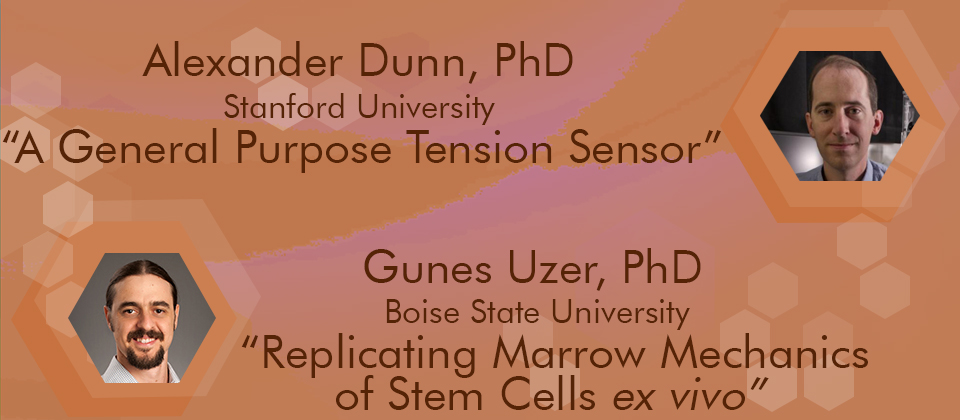Announcing AAP Regenerative Rehabilitation Consortium (ARCC)
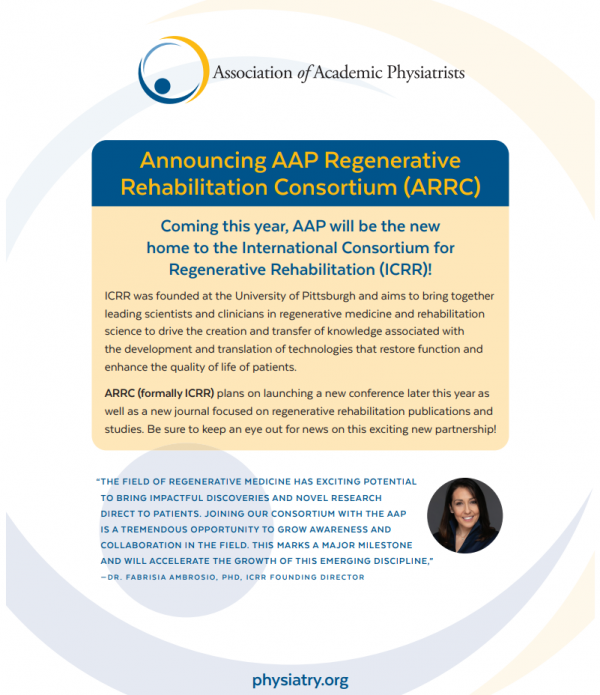
UK College of Health Sciences researchers find potential key to long-term knee health after injury
Regen Rehab News: “UK College of Health Sciences researchers find potential key to long-term knee health after injury”. Read more here: UK College of Health Sciences researchers find potential key to long-term knee health after injury | UKNow (uky.edu)
University of Arizona Research Job Openings
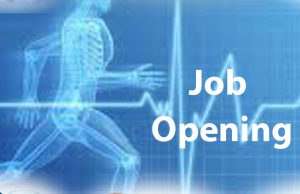 The Song Lab at University of Arizona is actively looking for graduate students and postdoctoral fellows to join the tissue engineering team in the Department of Biomedical Engineering. The lab focuses on combining engineered biomaterials and stem cells to create platforms mimicking tissues and organs in the body. Projects in the lab typically span multiple disciplines, so applicants from different backgrounds are welcome! Please address your cover letter and CV with reference information to Dr. Shang Song (shangsong@arizona.edu), and feel free to reach out with any questions! Apply here.
The Song Lab at University of Arizona is actively looking for graduate students and postdoctoral fellows to join the tissue engineering team in the Department of Biomedical Engineering. The lab focuses on combining engineered biomaterials and stem cells to create platforms mimicking tissues and organs in the body. Projects in the lab typically span multiple disciplines, so applicants from different backgrounds are welcome! Please address your cover letter and CV with reference information to Dr. Shang Song (shangsong@arizona.edu), and feel free to reach out with any questions! Apply here.
NIH Rehabilitation Research Newsletter
 Read the June 2023 Rehabilitation Research Newsletter from the Eunice Kennedy Shriver National Institute of Child Health and Human Development here!
Read the June 2023 Rehabilitation Research Newsletter from the Eunice Kennedy Shriver National Institute of Child Health and Human Development here!
Research Spotlight
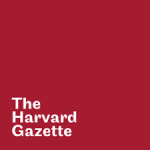 Check out the Harvard Gazette’s article on how AR3T affiliates find the key to healing muscle injuries in the elderly! READ MORE
Check out the Harvard Gazette’s article on how AR3T affiliates find the key to healing muscle injuries in the elderly! READ MORE
Research Assistant Position Available
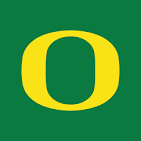 The University of Oregon Knight Campus is seeking to fill a Research Assistant or Associate position with the Regenerative Rehabilitation Moonshot program of the Wu Tsai Human Performance Alliance. Click here for more information on this great opportunity!
The University of Oregon Knight Campus is seeking to fill a Research Assistant or Associate position with the Regenerative Rehabilitation Moonshot program of the Wu Tsai Human Performance Alliance. Click here for more information on this great opportunity!
Virginia Tech Research Scientist Job Opening
 Senior Research Scientist position now open at the newly established Center for Disease Mechanics in the Department of Mechanical Engineering at Virginia Tech! Click here for more information on how to apply!
Senior Research Scientist position now open at the newly established Center for Disease Mechanics in the Department of Mechanical Engineering at Virginia Tech! Click here for more information on how to apply!
AR3T’s Dr. Thomas Rando Receives 2023 ISSCR Achievement Award
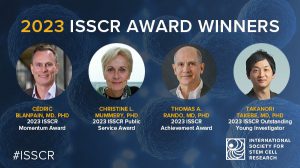 Congratulations to AR3T’s Co-Director, Thomas Rando, MD, PhD, for receiving ISSCR’s 2023 Achievement Award!
Congratulations to AR3T’s Co-Director, Thomas Rando, MD, PhD, for receiving ISSCR’s 2023 Achievement Award!
Read more here.
AR3T’s Dr. Fabrisia Ambrosio Named Director of the Discovery Center for Musculoskeletal Recovery at Harvard Medical School!
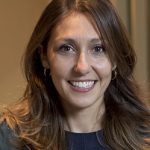 Congratulations to AR3T Co-Director, Fabrisia Ambrosio, PhD, MPT, who has been named Atlantic Charter Director of the Discovery Center for Musculoskeletal Recovery in Schoen Adams Research Institute at Spaulding Rehabilitation at Harvard Medical School.
Congratulations to AR3T Co-Director, Fabrisia Ambrosio, PhD, MPT, who has been named Atlantic Charter Director of the Discovery Center for Musculoskeletal Recovery in Schoen Adams Research Institute at Spaulding Rehabilitation at Harvard Medical School.
Read more here.
LeaRRn Rehabilitation Network’s Webinar Series
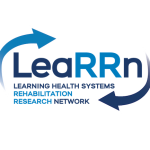 Click here to register for LeaRRn’s webinar series: “Using Health System Research to Revolutionize Rehabilitation Care”.
Click here to register for LeaRRn’s webinar series: “Using Health System Research to Revolutionize Rehabilitation Care”.
New Publication on Regenerative Rehabilitation
 Read the recent publication by AR3T Director, Dr. Fabrisia Ambrosio (Harvard University), and colleagues on “Bioengineered 3D Skeletal Muscle Model Reveals Complement 4b as a Cell-Autonomous Mechanism of Impaired Regeneration with Aging”.
Read the recent publication by AR3T Director, Dr. Fabrisia Ambrosio (Harvard University), and colleagues on “Bioengineered 3D Skeletal Muscle Model Reveals Complement 4b as a Cell-Autonomous Mechanism of Impaired Regeneration with Aging”.
NIH Rehabilitation Research Newsletter
 Read the October 2022 Rehabilitation Research Newsletter from the Eunice Kennedy Shriver National Institute of Child Health and Human Development here!
Read the October 2022 Rehabilitation Research Newsletter from the Eunice Kennedy Shriver National Institute of Child Health and Human Development here!
PTJ Call for Papers – Advances in Rehab Technology
Physical Therapy & Rehabilitation Journal seeks high-quality manuscripts on rehabilitation technology in patients with a diverse range of conditions and injuries for a Special Issue. Proposals due Sept 15. More info here.
PhD and Postdoctoral Positions Available at the University of Pittsburgh
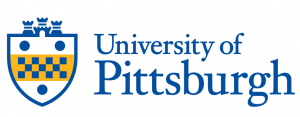 New PhD and postdoctoral positions available at the Neuromuscular Research Laboratory (NMRL) at the University of Pittsburgh. More information can be found here!
New PhD and postdoctoral positions available at the Neuromuscular Research Laboratory (NMRL) at the University of Pittsburgh. More information can be found here!
2022 Virtual Regenerative Medicine Essentials Course Recording
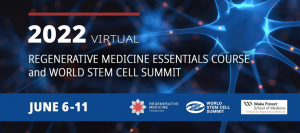 AR3T hosted the Regenerative Rehabilitation Session featuring Eda Yildirim-Ayan PhD, Marian Hettiaratchi PhD, Spencer Szczesny PhD, Franklin West PhD, & Amrita Sahu PhD during the virtual Regenerative Medicine Essentials Course/World Stem Cell Summit in June 2022. View the session recording here!
AR3T hosted the Regenerative Rehabilitation Session featuring Eda Yildirim-Ayan PhD, Marian Hettiaratchi PhD, Spencer Szczesny PhD, Franklin West PhD, & Amrita Sahu PhD during the virtual Regenerative Medicine Essentials Course/World Stem Cell Summit in June 2022. View the session recording here!
Orthobiologics and Regenerative Medicine Podcast Series
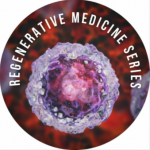 Check out the latest Orthobiologics & Regenerative Medicine podcast episode featuring AR3T’s Dr. Fabrisia Ambrosio! Click here to listen.
Check out the latest Orthobiologics & Regenerative Medicine podcast episode featuring AR3T’s Dr. Fabrisia Ambrosio! Click here to listen.
MR3 Quarterly Newsletter
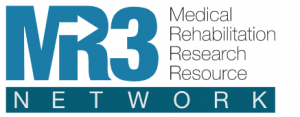 Click here to read MR3’s April 2022 Newsletter!
Click here to read MR3’s April 2022 Newsletter!
AR3T’s Dr. Fabrisia Ambrosio Elected to the 2022 Class of the AIMBE College of Fellows
 Congratulations to AR3T’s Co-Director Dr. Fabrisia Ambrosio who was elected to the 2022 Class of the AIMBE College of Fellows ! Read more here.
Congratulations to AR3T’s Co-Director Dr. Fabrisia Ambrosio who was elected to the 2022 Class of the AIMBE College of Fellows ! Read more here.
Orthobiologics and Regenerative Medicine Podcast Series
 Check out the second episode of the Orthobiologics & Regenerative Medicine podcast featuring Dr. Kenneth Mautner from Emory University! Click here to listen.
Check out the second episode of the Orthobiologics & Regenerative Medicine podcast featuring Dr. Kenneth Mautner from Emory University! Click here to listen.
Tenure-Track Position Available at Wayne State University
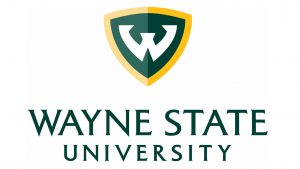 New Tenure-Track Position available in Occupational Therapy at Wayne State University. Wayne State has an active Regenerative Rehabilitation Research and Training Program and is a member of the International Consortium for Regenerative Rehabilitation. Review the opportunity here and apply now!
New Tenure-Track Position available in Occupational Therapy at Wayne State University. Wayne State has an active Regenerative Rehabilitation Research and Training Program and is a member of the International Consortium for Regenerative Rehabilitation. Review the opportunity here and apply now!
Orthobiologics and Regenerative Medicine Podcast Series
 Check out the first Orthobiologics & Regenerative Medicine podcast featuring AR3T’s Principal Investigator, Dr. Michael Boninger! Click here to listen.
Check out the first Orthobiologics & Regenerative Medicine podcast featuring AR3T’s Principal Investigator, Dr. Michael Boninger! Click here to listen.
New JoVE Methods Collection
 A special JoVE Methods Collection on translational and pre-clinical mechanotherapy techniques used to study health and disease in animal models is accepting manuscripts to be included in this special issue. AR3T will provide additional funding support of up to $2,000 towards open access publication costs for each accepted manuscript. Please contact hirotaka@pitt.edu for more information. View the collection here.
A special JoVE Methods Collection on translational and pre-clinical mechanotherapy techniques used to study health and disease in animal models is accepting manuscripts to be included in this special issue. AR3T will provide additional funding support of up to $2,000 towards open access publication costs for each accepted manuscript. Please contact hirotaka@pitt.edu for more information. View the collection here.
Post-Symposium Workshop hosted by AR3T & NC NM4R
 AR3T and NC NM4R hosted a Post-Symposium Workshop on Targeted Neuromodulation on Friday, November 5, 2021. View the workshop recording here!
AR3T and NC NM4R hosted a Post-Symposium Workshop on Targeted Neuromodulation on Friday, November 5, 2021. View the workshop recording here!
MR3’s November 2021 Newsletter
 Read the Medical Rehabilitation Research Resource (MR3) Network’s latest news letter from here!
Read the Medical Rehabilitation Research Resource (MR3) Network’s latest news letter from here!
Congratulations to AR3T & NM4R’s Joint Pilot Grant Awardee!
Congratulations to Dr. Koyal Garg, Ph.D., Assistant Professor of Biomedical Engineering at Saint Louis University, for being awarded a Neuromodulation & Regenerative Rehabilitation Pilot Grant to carry out the proposal, “Combined Application of Regenerative and Rehabilitative Therapies to Enhance Muscle Mass and Function Following Volumetric Muscle Loss.”
AR3T’s Dr. Fabrisia Ambrosio selected as a 2021 Women of Influence!
 Congratulations to AR3T’s Co-Director Dr. Fabrisia Ambrosio who was selected as a 2021 Women of Influence by the Pittsburgh Business Times! Read more here.
Congratulations to AR3T’s Co-Director Dr. Fabrisia Ambrosio who was selected as a 2021 Women of Influence by the Pittsburgh Business Times! Read more here.
Congratulations to AR3T’s Supplemental Grant Awardees!
Congratulations to AR3T Supplemental Grant Awardees, Franklin West, PhD and Jarrod Call, PhD (University of Georgia). Dr. West and Dr. Call’s research will lead to the development of an innovative line of Regenerative Rehabilitation research.
AR3T’s Dr. Thomas Rando named Eli and Edythe Broad Center’s New Director at UCLA!
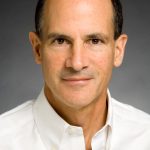 Congratulations to AR3T Principal Investigator, Thomas Rando, MD, PhD, who has been named director of the Eli and Edythe Broad Center of Regenerative Medicine and Stem Cell Research at UCLA.
Congratulations to AR3T Principal Investigator, Thomas Rando, MD, PhD, who has been named director of the Eli and Edythe Broad Center of Regenerative Medicine and Stem Cell Research at UCLA.
Read more here.
Wu Tsai Human Performance Alliance will explore peak performance to help all people thrive throughout life
New research partnership unites six leading academic institutions (Stanford University; Boston Children’s Hospital, a Harvard Medical School Affiliate; University of California San Diego; University of Kansas; University of Oregon; and the Salk Institute for Biological Studies) to transform the science of human performance and advance global human health. The Alliance will capitalize on the decade-long technology convergence taking place across fields, including regenerative rehabilitation, medical imaging, data sciences, artificial intelligence, computational modeling, and genetic sciences. Learn more about the Wu Tsai Human Performance Alliance during a special presentation at the Symposium for Regenerative Rehabilitation.
Regenerative Medicine Innovation Project (RMIP) Investigator-Initiated Clinical Trials
 The National Institutes of Health (NIH) participating Institutes and Centers, in coordination with the U.S. Food and Drug Administration (FDA), seek highly meritorious clinical trial applications proposing to explore and enable the development of safe and effective regenerative medicine (RM) interventions using adult stem cells.
The National Institutes of Health (NIH) participating Institutes and Centers, in coordination with the U.S. Food and Drug Administration (FDA), seek highly meritorious clinical trial applications proposing to explore and enable the development of safe and effective regenerative medicine (RM) interventions using adult stem cells.
Earliest Submission Date: September 8, 2021
Application Due Date: October 8, 2021
Learn more here.
Graduate Student Positions Available at the AO Foundation
![]() AO Research Institute Davos, Switzerland, is looking to hire motivated scientists to embark on a 4-year PhD student program. The project will make use of a joint kinematic mimicking bioreactor and will investigate novel therapies combined with mechanical load for articular cartilage repair. Learn more here. For more information, please contact: martin.stoddart@aofoundation.org
AO Research Institute Davos, Switzerland, is looking to hire motivated scientists to embark on a 4-year PhD student program. The project will make use of a joint kinematic mimicking bioreactor and will investigate novel therapies combined with mechanical load for articular cartilage repair. Learn more here. For more information, please contact: martin.stoddart@aofoundation.org
NEW! JoVE Methods Collection
 A special JoVE Methods Collection on current methods in peripheral nerve regeneration research is accepting manuscripts to be included in this special issue. View the collection here.
A special JoVE Methods Collection on current methods in peripheral nerve regeneration research is accepting manuscripts to be included in this special issue. View the collection here.
Congratulations to the Lightning Talks Competition Winners!
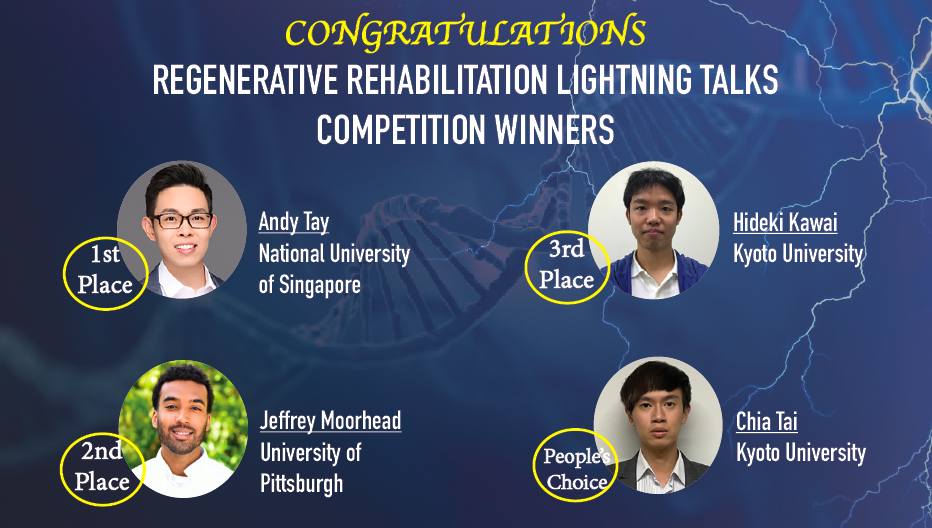
Congratulations to ARᶟT’s Pilot Grant Awardees!
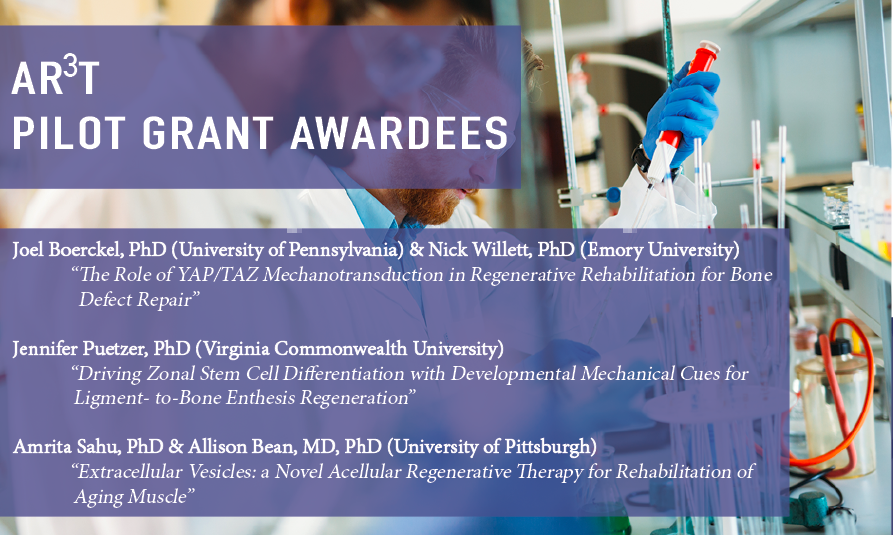
Researcher Spotlight: Sarah Heilshorn, PhD
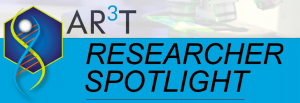 AR3T researcher Dr. Sarah Heilshorn talks about her journey to becoming a professor and role model in materials science and engineering, from rural Ohio to Germany to Stanford University. Full article here.
AR3T researcher Dr. Sarah Heilshorn talks about her journey to becoming a professor and role model in materials science and engineering, from rural Ohio to Germany to Stanford University. Full article here.
Summary of the 8th Annual International Symposium on Regenerative Rehabilitation
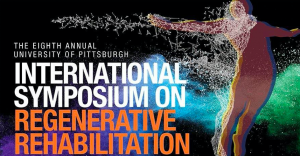
This post-symposium summary, published in npj Regenerative Medicine, covers the 8th Annual International Symposium on Regenerative Rehabilitation, which was held last October in Charlottesville, Virginia. Read more here.
NIH Funds Six New Resource Centers
 The Medical Rehabilitation Research Resource (MR3) Network comprises six Rehabilitation Research Resource Centers.The six centers provide infrastructure and access to expertise, technologies, and resources to foster clinical and translational research in medical rehabilitation. Learn more about the six centers here!
The Medical Rehabilitation Research Resource (MR3) Network comprises six Rehabilitation Research Resource Centers.The six centers provide infrastructure and access to expertise, technologies, and resources to foster clinical and translational research in medical rehabilitation. Learn more about the six centers here!
NSF Grant Awarded to AR3T Researcher Gunes Uzer!
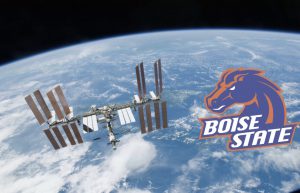 From an AR3T technology development grant to space, Dr. Gunes Uzer of Boise State, is making progress in understanding the role of exercise (mechanical therapy/vibration) on stem cell aging! Congratulations Dr. Uzer! READ MORE
From an AR3T technology development grant to space, Dr. Gunes Uzer of Boise State, is making progress in understanding the role of exercise (mechanical therapy/vibration) on stem cell aging! Congratulations Dr. Uzer! READ MORE
Regenerative Rehabilitation Web Collection-Call for Papers
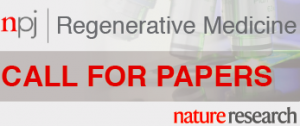 Co-editors Dr. Thomas Rando and Dr. Fabrisia Ambrosio encourage you to submit your manuscripts to npj Regenerative Medicine for consideration for their Regenerative Rehabilitation web collection! View the collection here.
Co-editors Dr. Thomas Rando and Dr. Fabrisia Ambrosio encourage you to submit your manuscripts to npj Regenerative Medicine for consideration for their Regenerative Rehabilitation web collection! View the collection here.
Stem Cell Research and Technology Resource Center
 The University of Colorado at Boulder’s Stem Cell Research and Technology Resource Center is a shared facility with the mission of promoting interdisciplinary research utilizing stem cells. To this end, the Center offers a shared space for culturing human pluripotent stem cells (primarily iPSCs) as well as regular training workshops. Learn more about their training opportunities here!
The University of Colorado at Boulder’s Stem Cell Research and Technology Resource Center is a shared facility with the mission of promoting interdisciplinary research utilizing stem cells. To this end, the Center offers a shared space for culturing human pluripotent stem cells (primarily iPSCs) as well as regular training workshops. Learn more about their training opportunities here!
Taking the Next Steps: ICRR Perspective
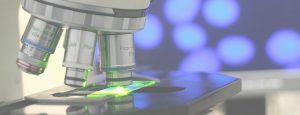 The International Consortium for Regenerative Rehabilitation has a new publication out that summarizes the state of the science, steps being taken to establish this new and interdisciplinary field, and implications for rehabilitation practitioners and basic scientists who are collaborating to transform clinical practice and, ultimately, to optimize patient outcomes! Read it here!
The International Consortium for Regenerative Rehabilitation has a new publication out that summarizes the state of the science, steps being taken to establish this new and interdisciplinary field, and implications for rehabilitation practitioners and basic scientists who are collaborating to transform clinical practice and, ultimately, to optimize patient outcomes! Read it here!
Grant Writing Crash Course
Pre-Symposium Workshop at the 8th Annual International Symposium on Regenerative Rehabilitation
Presented by Dr. Rosemarie Hunziker, former Program Director for NIBIB, this helpful workshop is now available as a webinar!
Informatics for Rehabilitation Researchers
CORRT has a new webinar available for viewing on the topic of informatics for rehabilitation scientists, presented by Philip R.O. Payne, PhD, FACMI, from the Institute for Informatics, Washington University.
AR3T in the News
AR3T PIs, Drs. Fabrisia Ambrosio and Michael Boninger, were interviewed for PT in Motion‘s cover story, “PTs on Rehab’s Leading Edge”, which highlighted both AR3T and the field of Regenerative Rehabilita tion. Read it here!
tion. Read it here!
Interview with Hirotaka Iijima, PhD
AR3T interviewed Dr. Hirotaka Iijima, from Keio University, to learn about the development of his international collaboration in the field of Regenerative Rehabilitation. Read it here!
New Publication on Regenerative Rehabilitation
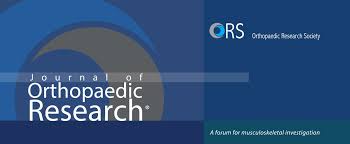 Read the recent publication by AR3T investigator, Dr. Christopher Evans (Mayo), and colleagues on “Regenerative Rehabilitation: the role of mechanotransduction in orthopaedic regenerative medicine”.
Read the recent publication by AR3T investigator, Dr. Christopher Evans (Mayo), and colleagues on “Regenerative Rehabilitation: the role of mechanotransduction in orthopaedic regenerative medicine”.
NIH’s Regenerative Medicine Innovation Project Webinar
Regenerative Medicine Innovation Project Webinar This new webinar provides an overview of the NIH Regenerative Medicine Innovation Project (RMIP) and describes the special conditions that apply to RMIP awards, describes the Regenerative Medicine Innovation Catalyst, and answers key questions that investigators will likely have and will need to understand in order to prepare fully responsive applications.
Science Image Competition Winner!
 Congratulations to Kiyoshi Yoshioka, of Nagasaki University, for submitting the winning photo for the first-ever Regenerative Rehabilitation Science Image Contest! Titled, “Slice the Object”, Kiyoshi’s image representing Regenerative Rehabilitation depicts the heterogeneity of muscle stem cells and a regenerating muscle fiber.
Congratulations to Kiyoshi Yoshioka, of Nagasaki University, for submitting the winning photo for the first-ever Regenerative Rehabilitation Science Image Contest! Titled, “Slice the Object”, Kiyoshi’s image representing Regenerative Rehabilitation depicts the heterogeneity of muscle stem cells and a regenerating muscle fiber.
Rehabilitative Exercise and Spatially Patterned Nanofibrillar Scaffolds Enhance Vascularization and Innervation Following Volumetric Muscle Loss
Interview with Jarrod Call, PhD
 AR3T interviewed Dr. Jarrod Call, Assistant Professor in the Department of Kinesiology (Exercise Science Programs) at the University of Georgia and Regenerative Rehabilitation researcher. Read it here!
AR3T interviewed Dr. Jarrod Call, Assistant Professor in the Department of Kinesiology (Exercise Science Programs) at the University of Georgia and Regenerative Rehabilitation researcher. Read it here!
Regenerative Rehabilitation: Applied Biophysics Meets Stem Cell Therapeutics
 New publication from AR3T PIs Thomas Rando & Fabrisia Ambrosio focuses on the synergy between rehabilitation strategies and regenerative responses for promoting tissue repair.
New publication from AR3T PIs Thomas Rando & Fabrisia Ambrosio focuses on the synergy between rehabilitation strategies and regenerative responses for promoting tissue repair.
Conference Report 6th Annual International Symposium on Regenerative Rehabilitation
Did you miss the 6th Annual International Symposium on Regenerative Rehabilitation? Read the Post-Symposium summary!
Congratulations to the Symposium on Regenerative Rehabilitation 2017 Travel Award Winners!


ARᶟT Has a New Co-Director

Fabrisia Ambrosio, PhD, MPT, from the University of Pittsburgh, joins Thomas Rando, MD, PhD, from Stanford University, as co-Principal Investigator of AR3T. Congratulations, Dr. Ambrosio!
Rehabilitation Following Regenerative Medicine Treatment Enhances Recovery
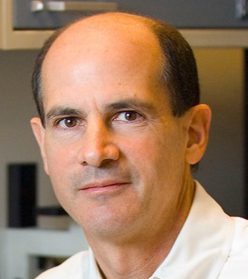
AR3T PI, Dr. Thomas Rando, and colleagues demonstrated that rehabilitation enhances recovery following a regenerative medicine treatment for volumetric muscle loss. Timing matters, though! Early exercise delayed regeneration in this study, proving the importance of regenerative rehabilitation research.
Using Magnetic Resonance Imaging to Study Stem Cell Therapies

The University of Pittsburgh’s Dr. Michael Modo, an AR3T researcher, is studying the use of MRI as a non-invasive way to study the in vivo biodistribution, migration and survival, and functional integration of stem cells.
University of Pittsburgh’s Rocky Tuan, Ph.D., Receives Research Award to Conduct Studies on International Space Station

Neural Stem Cell Therapy and Rehabilitation in the Central Nervous System: Emerging Partnerships

Appropriately timed sensory input and/or motor activity may augment central nervous system stem cell therapies. This review, by Heather Ross et al., discusses the limitations of current stem cell therapies and explains why a regenerative rehabilitation approach could improve outcomes following CNS injuries.
National Network for Rehabilitation Research
The Medical Rehabilitation Research Resource Network (MR3 Network) coordinates the activities of six rehabilitation research resource centers, including AR3T, that provide infrastructure and access to expertise, technologies, and resources to support clinical and translational research in medical rehabilitation across a wide range of disciplines and disease focus areas.

The Role of PTs in Regenerative Medicine

March, 2016 – NIH’s newly funded resource center, the Alliance for Regenerative Rehabilitation Research and Training (AR3T) was highlighted in PT in Motion, a magazine that goes out to over 90,000 members
Physiospot: “Understanding Mechanobiology: Physical Therapists as a Force in Mechanotherapy and Musculoskeletal Regenerative Rehabilitation”
 January, 2016 – Achieving functional restoration of diseased or injured tissues is the ultimate goal of both regenerative medicine approaches and physical therapy interventions.
January, 2016 – Achieving functional restoration of diseased or injured tissues is the ultimate goal of both regenerative medicine approaches and physical therapy interventions.
The Scientist: “Cellular Rehab”
 December, 2015 – Physical therapy and exercise are critical to the success of cell therapies approaching the clinic.
December, 2015 – Physical therapy and exercise are critical to the success of cell therapies approaching the clinic.
Congratulations to the 2015 ACRM Awards Recipients
 The Awards Committee, chaired by Stephanie Kolakowsky-Hayner, is pleased to announce the 2015 recipients of the seven prestigious ACRM awards.
The Awards Committee, chaired by Stephanie Kolakowsky-Hayner, is pleased to announce the 2015 recipients of the seven prestigious ACRM awards.
READ ARTICLE
ARᶟT chosen as Grant of the Month

September, 2015 – The McGowan Institute for Regenerative Medicine selected the Alliance for Regenerative Rehabilitation Research and Training (AR3T) as the grant of the month
The Guardian: “Can we reverse the ageing process by putting young blood into older people?”

August, 2015- A series of experiments has produced incredible results by giving young blood to old mice. Now the findings are being tested on humans. Ian Sample meets the scientists whose research could transform our lives.
Pitt Team Developing Technology to Allow Amputees to Feel with Prosthetic Limb, Improving Its Function
 February, 2015 – Rehabilitation experts at the University of Pittsburgh School of Medicine hope to one day give people with an arm amputation a prosthetic limb that not only moves like a natural one, but “feels” like it, too. They expect such sensation will improve dexterous control of the device and give users greater intuition about what they are doing with their prosthetic.
February, 2015 – Rehabilitation experts at the University of Pittsburgh School of Medicine hope to one day give people with an arm amputation a prosthetic limb that not only moves like a natural one, but “feels” like it, too. They expect such sensation will improve dexterous control of the device and give users greater intuition about what they are doing with their prosthetic.


